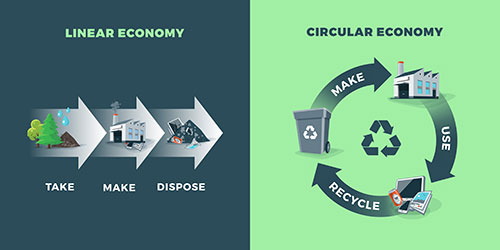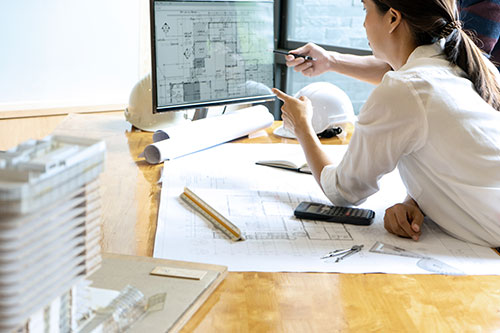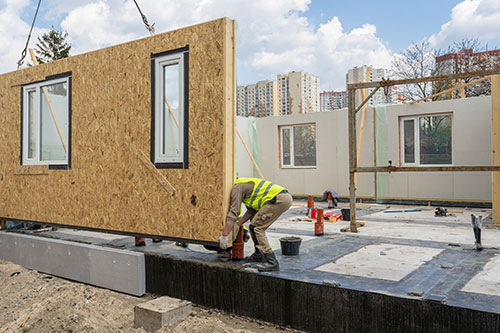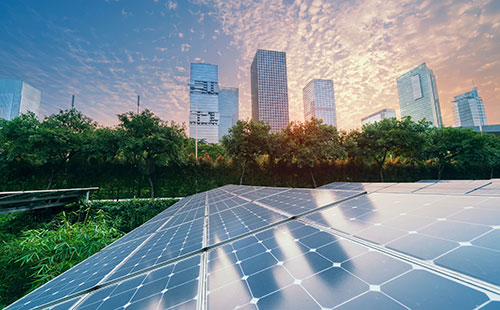
Offices in Auckland, Christchurch and Brisbane
NZ Please use the contact us form, and one of our team will be in touch as soon as possible

Offices in Auckland, Christchurch and Brisbane
NZ Please use the contact us form, and one of our team will be in touch as soon as possible
The construction industry inherently has one of the largest carbon footprints out of most other industries as demonstrated in the 2022 Global Status Report for Buildings and Construction. This report found that the sector accounted for over 34 per cent of global energy demand and around 37 per cent of energy and process related C02 emissions in 2021.
In Europe alone, the building sector represents 40 per cent of Europe’s energy demand, 80 per cent of which is from fossil fuels.
We can attribute this to a disproportionate amount of waste produced, reliance on heavy machinery, materials manufacturing/processing cycle which accounts for 9 per cent of overall energy related C02 emissions, a linear economy, importation of product from overseas markets and a failure to invest in lower emission processes and technologies.
As the built environment continues to evolve, so must those of us that work within it.
In our view, the use of renewable energy sources, technology and digital software is the pinnacle part of this transformation, as we look to remove inefficiencies with our internal systems, communication, design and life cycle of both projects and buildings.
The fractured nature of New Zealand’s construction sector makes it difficult to implement these changes at a national level without impositions put in place by the government, however, we believe the best way to face any challenge is to face it head on and lead from the front.
Morgan & Partners Developments are committed to adapting and changing to the environment around us, that’s why we are committed to improving our industries sustainability by:
 Sourcing product from a circular material economy
Sourcing product from a circular material economyOver the decades, the design and manufacturing of products we use in everyday life as well as within the building industry are executed with little thought of the finite resources used to make them coupled with no consideration to how long these products last or if can be recycled and remanufactured. This has resulted in a ‘Linear Economy’ where we have a system of Natural Resources » Take » Make » Dispose.
Instead, we need to push to source products that are designed and manufactured with longevity and recyclability in mind, resulting in a circular material economy system Make » Use » Return. This ensures that once the material has reached the end of its useful life, it can be recycled or remanufactured rather than ending up in another landfill.
 When constructing new buildings, whether these be in the residential, industrial, or commercial sector, we normally do so from reading a set of printed or digital plans and drawings. This is the way it has been for generations, and it works, so why change it? Because we can and we should.
When constructing new buildings, whether these be in the residential, industrial, or commercial sector, we normally do so from reading a set of printed or digital plans and drawings. This is the way it has been for generations, and it works, so why change it? Because we can and we should.
In simple terms, BIM is a process that involves generating and managing building data throughout the building’s lifecycle using modelling software that creates a digital 3D representation of the building including dimensions, geometry, structural detail and service locations.
BIM is not a new concept and has been around since the 70’s with practical applications in the commercial sector being widely used by the mid 2000’s. However, as the technology improves and develops wider use applications, it is becoming more affordable to use across all building sectors.
Not only is BIM a great tool to use to facilitate successful project delivery by creating greater on-site efficiency and interpretation.
It is also invaluable for ongoing operation & maintenance by defining material types, building components, monitoring & mapping internal infrastructures (gas, water, electricity, service access) on larger buildings and developments.
This allows future maintenance and servicing costs to be reduced by allowing a clear picture of all aspects of the building and services which can be rapidly pinpointed.
 As mentioned previously, the construction industry produces some if the highest volumes of waste and emissions out of most other industries.
As mentioned previously, the construction industry produces some if the highest volumes of waste and emissions out of most other industries.
Though production of waste in the construction industry is inevitable, we believe there are ways we can reduce the amount of waste we are sending to the landfill through better design principals.
We see this challenge being tackled by:
 Building life-cycle service costs should be one of the first items considered when design gets underway. This is to look at the total cost of a building system or material (Construction Life-Cycle Cost Analysis), this includes initial acquisition cost, efficiency benefits, maintenance costs, replacement costs, and disposing of the system or material once it has reached the end of its useful life.
Building life-cycle service costs should be one of the first items considered when design gets underway. This is to look at the total cost of a building system or material (Construction Life-Cycle Cost Analysis), this includes initial acquisition cost, efficiency benefits, maintenance costs, replacement costs, and disposing of the system or material once it has reached the end of its useful life.
Whether it be considering the location and height of elements in commercial buildings requiring regular servicing, such as lighting, through to using more thermally efficient products in the residential sector to reduce the long-term heating costs of homes.
These items can have a large impact not only from a financial perspective, but also from an environmental perspective.
The less efficient a building is to retain heat for example, the greater the electricity demand, and pending the source of the electricity, there will inevitably be a greater carbon footprint associated with those buildings’ life cycle.
Often the cost of using better quality or more thermally efficient products is inhibitive, and the mistake is made to go with the cheaper product, even though the long-term benefits would outweigh the initial financial outlay.
This is referred to as the Iceberg principal, where the lower purchase price is only 15 per cent of the life-cycle cost with the remaining 85% of the costs being consumed by maintenance/replacement costs and disposal costs.
Our greatest focus for this is to drive life cycle service cost improvements in the residential sector, where instead of designing houses to the minimum standards of the building code as is generally accepted, our endeavour is to elevate the standard of accepted housing by constantly exploring new methods and products along with: